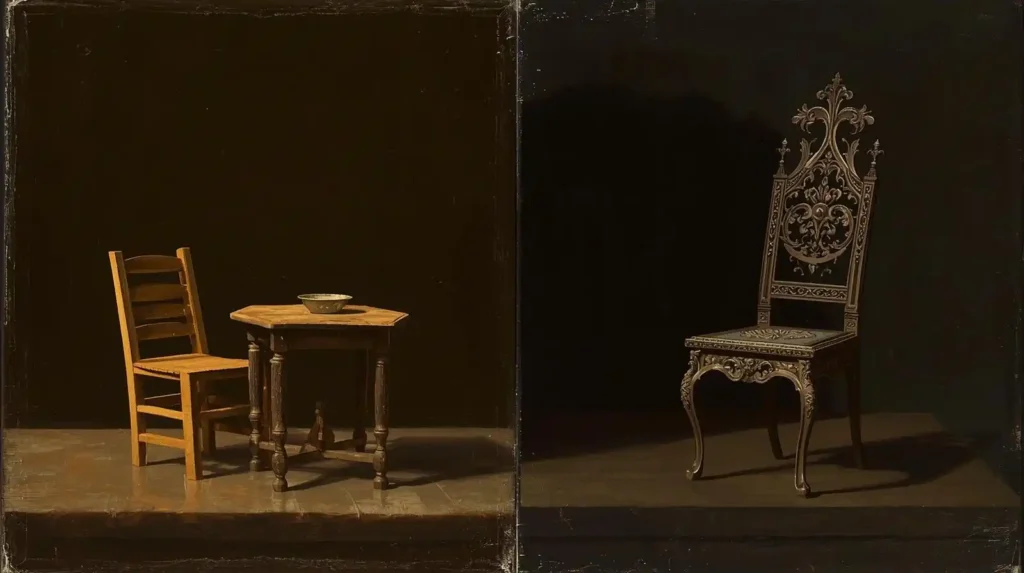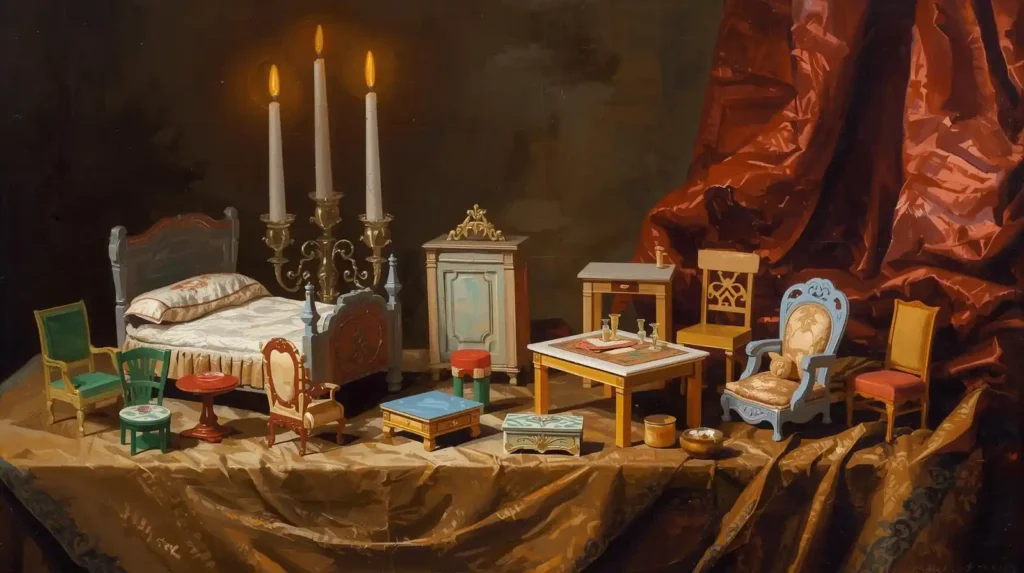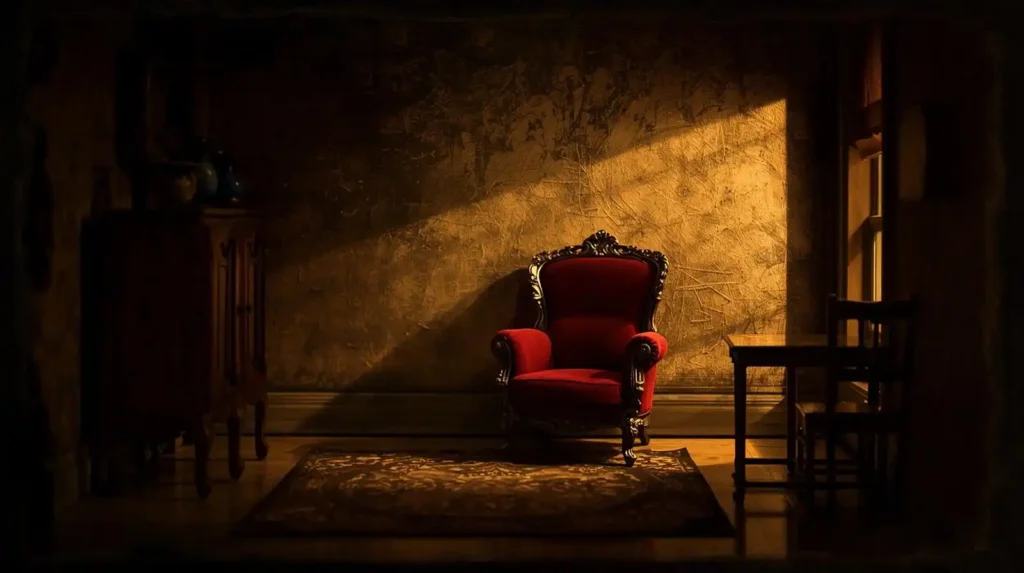So you’ve caught the miniature bug — your heart’s set on furnishing your first dollhouse — but where should you begin? As a consultant to newbie hobbyists, I’ll walk you through the top picks and a smart buying guide so you avoid overwhelm and start off with confidence.
In this listicle, you’ll find my recommended best dollhouse furniture options for beginners, plus the criteria I use and tips to prevent common rookie missteps.
What Makes Good Beginner Dollhouse Furniture?

Before diving into picks, let’s agree on what “good for beginners” means. You’ll want:
- Ease of use: pieces that don’t demand expert skills to assemble or finish
- Affordable cost: low-risk pricing lets you experiment without regret
- Durability (or at least reasonable sturdiness)
- Scale compatibility: matching your chosen dollhouse scale
- Flexibility or upgrade path: something you can decorate, swap out, or improve
That translates into favoring affordable dollhouse furniture sets, simple plastic dollhouse furniture for immediate play, and modest wooden dollhouse furniture kits you can personalize. As your skill and taste evolve, you can graduate into more advanced pieces.
Top 7 Picks for Beginner Dollhouse Furniture
Below are seven choices that hit different sweet spots—play-ready, buildable, mix-and-match, and upgradeable. (These are examples — always check scale and shipping details for your region.)
| # | Product / Set | Why It’s Great for Beginners |
|---|---|---|
| 1. All-in-one Starter Room Set (plastic “play & pose” kit) | Ideal if you want to skip the learning curve. | Look for a set that comes with basic furniture (bed, table, chair) in plastic so you can begin decorating and playing immediately. |
| 2. Affordable plastic furniture bundles | Cheap and replaceable, so mistakes don’t hurt. | Use these in low-stress rooms (like a guest room) while experimenting with paint or patina. |
| 3. Simple unpainted wooden dollhouse furniture kit | Gives you hands-on experience with assembly and finishing. | A 22-piece solid wood set (sans plastic) is a classic entry point. |
| 4. Pre-finished wooden living room or kitchen set | For when you want aesthetics without the finishing work. | Use this as your “anchor” furniture and build around it. Makes for a clean, polished look early. |
| 5. Mixed-material modular sets | Combine plastic, metal, and wood elements—ideal for experimenting. | You can replace or upgrade one piece at a time without overhauling the entire set. |
| 6. Specialty accent pieces or statement furniture | Adds character and lets you inject your personal style. | Think bold armchairs, vintage stoves, or miniature rugs. Use them to test specific techniques. |
| 7. Budget DIY laser-cut or pre-cut kits | Bridges the gap between plastic convenience and full custom builds. | Laser-cut wood kits in 1:12 or 1:24 scale are increasingly common. |
Highlight Example: Why a Wood Starter Set Works Well
One 22-piece solid wood set (no plastic) offers a great balance: it feels real, but it’s simple enough to start without fear. Because there’s no finish, you get to choose wood stain, paint, or distressing. Compared to glossy pre-fab plastic, it’s more satisfying — and a better training ground for techniques.
How to Pick the Right Furniture: A Buying Guide for Beginners
Here’s a decision framework you can use every time you’re tempted by a set:
1. Choose your scale and stay consistent
Most dollhouses and furniture come in 1:12 scale (“one inch equals one foot”) — this is the standard in the U.S. and many global markets.
If you mix scales (say, 1:12 and 1:24), things look odd and won’t fit well. So Once you commit to a scale, stick with it.
2. Material trade-offs: plastic vs. wood
- Plastic dollhouse furniture: inexpensive, durable, play-friendly, and often pre-painted. Great for immediate results.

- Wooden dollhouse furniture: more natural look, customizability, and learning opportunities—but requires finishing and care.

If you’re fully new, start with plastic or mixed, then graduate to wood. As you get comfortable, you can explore more through the dollhouse furniture guide.
3. Assembly complexity
Some kits are “snap-together” or require minimal gluing; others need soldering, fine painting, or sanding. Choose a kit that matches your comfort level.
4. Flexibility & modularity
Look for furniture you can repaint, distress, or reconfigure. That flexibility allows you to evolve your style without replacing everything.
5. Price vs. durability
For many beginners, “affordable dollhouse furniture” is the sweet spot. Don’t overspend on delicate pieces you may damage while you’re learning. A few plastic or cheaper wood sets give you room to make mistakes and learn.
6. Warranties, support, and parts
Some brands (like MiniatureBits) provide replacement parts and long-term support. That’s a big plus if you mess up or lose pieces.
7. Match your dollhouse interior style
If your house has Victorian trim, sleek modern furniture may look clashing. Plan your aesthetic early (Victorian, cottage, mid-century, etc.), then select pieces that harmonize.
Getting Started: Suggested Order of Acquisition
Here’s a recommended progression to outfit your dollhouse smoothly:
- Start with a simple starter set or plastic bundle so you can see interiors instantly and get excited
- Add one wooden kit as your first “upgrade” and practice finishing
- Introduce an accent or statement piece (like a fireplace or clawfoot tub)
- Gradually replace or layer in better furniture as your style and skill mature
This approach keeps your commitment low while still allowing you to incrementally improve the look and craftsmanship.

Tips & Tricks from Miniaturists You Should Know
- Many hobbyists swear by basswood sheets for custom builds: it’s affordable, easy to cut, and forgiving.
- Start with a simple box-style table to build confidence; don’t jump to four-shelf cabinets.
- In online miniature communities, brands like Rolife / Robotime often get praise for being beginner-friendly. (Reddit)
- Over time, experiment with finishes, stains, or washes to age your furniture—don’t aim for perfection at first.
Also, once you’re ready, you can dig into making your own tiny furniture with guidance from DIY dollhouse furniture. That link contains step-by-step projects ideal for hands-on learning.

Mistakes Beginners Commonly Make (and How to Avoid Them)
- Mixing scales — always double-check the scale before purchase
- Underestimating finishing work — a plain wood kit still needs paint/sealant
- Overbuying too early — get a few good sets, not dozens of random pieces
- Ignoring replaceability — favor modular or mass-produced pieces first
- Skipping test fits — always dry-fit a piece before gluing permanently
By steering clear of these pitfalls, your progress will be smoother and more rewarding.
Final Thoughts
When you’re just beginning your miniatures journey, go for options that let you experiment, learn, and enjoy results early. The best dollhouse furniture for you right now might not be the finest or priciest, but rather the one you’ll actually use, tweak, and improve. Start with plastic or basic wood kits, gain confidence, then build toward more ambitious pieces — referring to the dollhouse furniture guide as you explore styles, materials, and collecting. When you feel inspired, take on DIY builds from DIY dollhouse furniture. The path is gradual, but each small success boosts your skill and joy.
Enjoy the process — arranging your first miniature living room or kitchen is more than decoration. It’s the beginning of a creative world you’ll live in, piece by piece.
Frequently Asked Questions (FAQ)
Q1: What is the best scale to start with for dollhouse furniture?
A: The most common is 1:12 scale (i.e. 1 inch in the dollhouse equals 1 foot in reality). It’s widely available and compatible with many kits. Avoid mixing scales (1:24 and 1:12, etc.) as things won’t look right.
Q2: Should I start with plastic or wood furniture?
A: If you want instant results and low frustration, plastic is more forgiving. Wood gives more opportunity for customization and techniques. Many beginners mix both and transition to more wood over time.
Q3: How much money should I budget for beginner furniture?
A: You don’t need to spend a lot. A few plastic or simple wood sets under $20–$50 (USD) can outfit multiple rooms conceptually. Think incremental spending rather than full sets all at once.
Q4: Can I repaint or refinish pre-finished furniture?
A: Yes — but it’s trickier. You’ll need to sand or strip the finish before applying new layers. That’s why many beginners prefer starting with unpainted wood furniture kits.
Q5: How do I reduce mistakes when assembling kits?
A: Always dry-fit parts before gluing, read instructions thoroughly, use clamps or weights while glue cures, and start with smaller parts like tables or chairs before tackling large cabinets.




